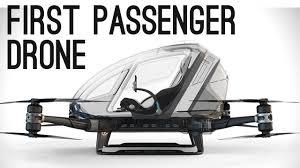
Breaking News
 $26M Frozen on Blockchain - With One Click
$26M Frozen on Blockchain - With One Click
 Italy are on national strike shutdown rejecting digital enslavement...
Italy are on national strike shutdown rejecting digital enslavement...
 The following U.S. states are currently using the rebranded "Reporty Homeland Security" so
The following U.S. states are currently using the rebranded "Reporty Homeland Security" so
 NATO Chief Urges Europe To Prepare For Long-Term World War With Russia, China, Iran & North Korea
NATO Chief Urges Europe To Prepare For Long-Term World War With Russia, China, Iran & North Korea
Top Tech News
 HUGE 32kWh LiFePO4 DIY Battery w/ 628Ah Cells! 90 Minute Build
HUGE 32kWh LiFePO4 DIY Battery w/ 628Ah Cells! 90 Minute Build
 What Has Bitcoin Become 17 Years After Satoshi Nakamoto Published The Whitepaper?
What Has Bitcoin Become 17 Years After Satoshi Nakamoto Published The Whitepaper?
 Japan just injected artificial blood into a human. No blood type needed. No refrigeration.
Japan just injected artificial blood into a human. No blood type needed. No refrigeration.
 The 6 Best LLM Tools To Run Models Locally
The 6 Best LLM Tools To Run Models Locally
 Testing My First Sodium-Ion Solar Battery
Testing My First Sodium-Ion Solar Battery
 A man once paralyzed from the waist down now stands on his own, not with machines or wires,...
A man once paralyzed from the waist down now stands on his own, not with machines or wires,...
 Review: Thumb-sized thermal camera turns your phone into a smart tool
Review: Thumb-sized thermal camera turns your phone into a smart tool
 Army To Bring Nuclear Microreactors To Its Bases By 2028
Army To Bring Nuclear Microreactors To Its Bases By 2028
 Nissan Says It's On Track For Solid-State Batteries That Double EV Range By 2028
Nissan Says It's On Track For Solid-State Batteries That Double EV Range By 2028
Uber Is Working On A Vertical-Takeoff Aircraft

Ehang 184 Passenger Drone
Uber is looking for a VTOL aircraft, but they might instead settle on an autonomous people-carrying helicopter, like the Ehang 184 picture.
Uber, the hungry Silicon Valley company that turned people with cars and smartphones into a transportation fleet to rival taxis (while skirting things like labor regulations in the process), has set its sights on something much larger. Uber is already working on driverless cars, which happily for the company exist outside of labor law, but not even unmanned driving machines are enough to satisfy Uber's ambitions. The company wants a flying car.
Specifically, Uber products head Jeff Holden is looking at VTOL -- "vertical takeoff and landing" -- technologies. Holden expressed this interest during an interview with Recode executive editor Kara Swisher at the Nantucket Conference last Sunday. As Swisher reports:
Holden said that he has been researching the area, "so we can someday offer our customers as many options as possible to move around." He added that "doing it in a three-dimensional way is an obvious thing to look at."
Holden said in the interview that such technology could be in use within a decade, which is an aggressive prediction, given the issues around the complexity of movement in the air above densely populated areas. (Also, you know, the possibility of these VTOL vehicles crashing into each other.)

 Carbon based computers that run on iron
Carbon based computers that run on iron


